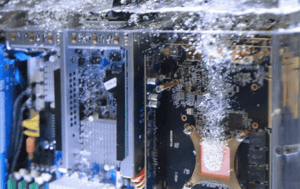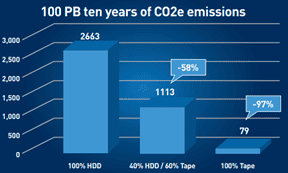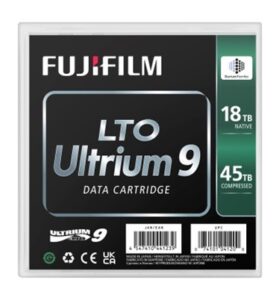 Recently I had the opportunity to meet with a newly appointed Chief Sustainability Officer (CSO) at a major scientific research organization. In this new position that seems to be trending across many industries, this CSO has been tasked with the overall responsibility for understanding the organization’s energy profile and how its carbon footprint is spread across its many different departments and then to figure out what actions can be taken to help achieve its carbon reduction goals. With this understanding in place, the CSO will proceed to put downward pressure on the department heads to make meaningful change.
Recently I had the opportunity to meet with a newly appointed Chief Sustainability Officer (CSO) at a major scientific research organization. In this new position that seems to be trending across many industries, this CSO has been tasked with the overall responsibility for understanding the organization’s energy profile and how its carbon footprint is spread across its many different departments and then to figure out what actions can be taken to help achieve its carbon reduction goals. With this understanding in place, the CSO will proceed to put downward pressure on the department heads to make meaningful change.
Given this background, the purpose of my call was to explain the role that today’s modern data tape can play in reducing power consumption and associated carbon footprint in data centers. Since this CSO really had no experience in large scale data operations, she was eager to listen given her need to start looking at every department to quickly identify opportunities for energy and carbon reduction. She will go after the low-hanging fruit first, but eventually no stone will be left unturned if her organization is to meet their aggressive sustainability goals.
In case anyone was thinking climate change wasn’t real, guess again! If you’ve been in the friendly skies recently for a business trip or a vacation, you probably noticed that the skies are not that friendly anymore. That’s because clear-air turbulence is a more common occurrence these days. One chatty pilot I encountered advised that we could expect a “bumpy” flight suggesting it was the new normal due to instability in the atmosphere caused by climate change. There have been several reports this year of unbuckled passengers and flight attendants injured and traumatized by extreme turbulence.
With new U.N. warnings of irreversible damage to communities and ecosystems as a backdrop, the award winning 60 Minutes show recently ran a piece on an experimental technology called “direct air capture” that vacuums CO2 out of the air and locks it deep in the ground where eventually it turns to harmless solid rock. It’s a mammoth undertaking and an admitted long shot, but it goes to show that eventually there will be no stone left unturned in the battle to reduce CO2 in our atmosphere.
 In the meantime, the tech giants like AWS, Microsoft, Google and Meta are investing billions of dollars in renewable energy sources including wind and solar. And they are spending billions on really amazing technologies like liquid immersive cooling where hardware operates in a solution of mineral oil in what looks like fish tanks. All great undertakings for sure, but not exactly the low-hanging fruit my CSO friend was looking for. She admitted that her organization needs to simply start by “turning off the lights at day’s end”. Every little bit of energy conversation makes a difference and that’s where today’s modern automated tape systems are low-hanging fruit when it comes to exponential data growth and alarming data center energy consumption.
In the meantime, the tech giants like AWS, Microsoft, Google and Meta are investing billions of dollars in renewable energy sources including wind and solar. And they are spending billions on really amazing technologies like liquid immersive cooling where hardware operates in a solution of mineral oil in what looks like fish tanks. All great undertakings for sure, but not exactly the low-hanging fruit my CSO friend was looking for. She admitted that her organization needs to simply start by “turning off the lights at day’s end”. Every little bit of energy conversation makes a difference and that’s where today’s modern automated tape systems are low-hanging fruit when it comes to exponential data growth and alarming data center energy consumption.
So as our CSO friend prepares to make meaningful change from the top on down and across all departments in her organization, here are 5 facts every CSO should know when dealing with the IT department in search of meaningful carbon reduction opportunities.
 Data quickly goes cold – industry experts agree that 60% to 80% of data goes cold and becomes archival between 30 and 90 days after creation. After 90 days, the probability of accessing that data falls below 1%. However, legacy data may be demanded again for business or scientific analytics or for purpose of monetization so users are reluctant to delete anything with potential value.
Data quickly goes cold – industry experts agree that 60% to 80% of data goes cold and becomes archival between 30 and 90 days after creation. After 90 days, the probability of accessing that data falls below 1%. However, legacy data may be demanded again for business or scientific analytics or for purpose of monetization so users are reluctant to delete anything with potential value.

In addition to renewable energy sourcing and really cool things like liquid immersion cooling, the major cloud service providers and many of the largest data intensive organizations are finding ways to simply conserve energy usage. They understand the dynamics, cost and energy advantage outlined above and have built their long-term archival services and strategies on today’s modern tape systems. Not to mention that tape is best in reliability and supports a comprehensive cyber security plan with its inherent air gap capabilities.
Finally, a well-planned long-term data retention strategy typically includes tape systems as complementary to flash, disk and cloud. It’s not an either or proposition. It’s really about getting the right data in the right place, at the right time. And most importantly for the CSOs, at the right cost and energy profile!
